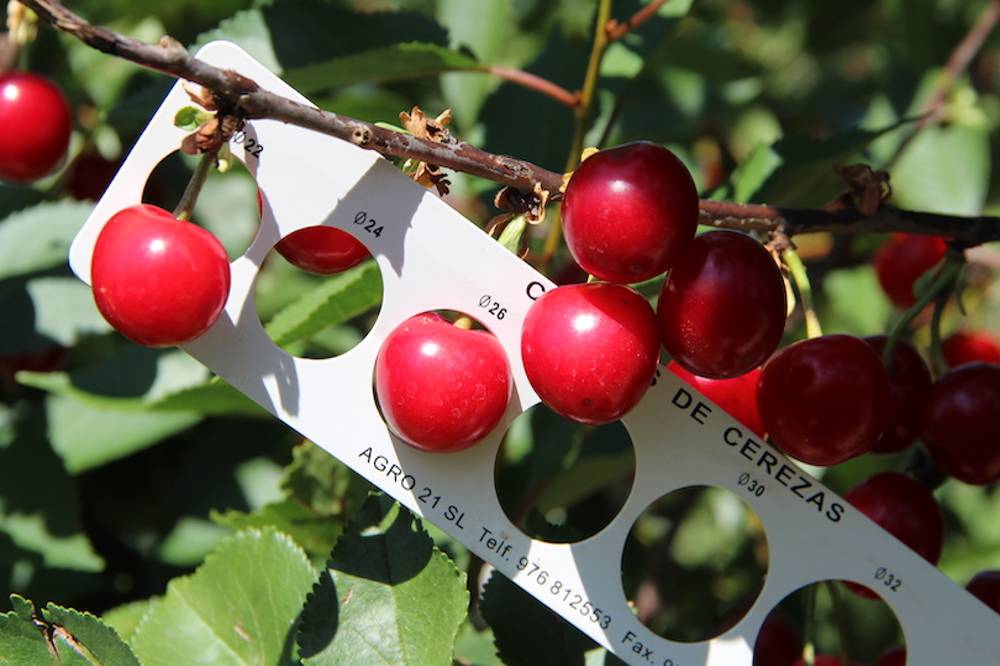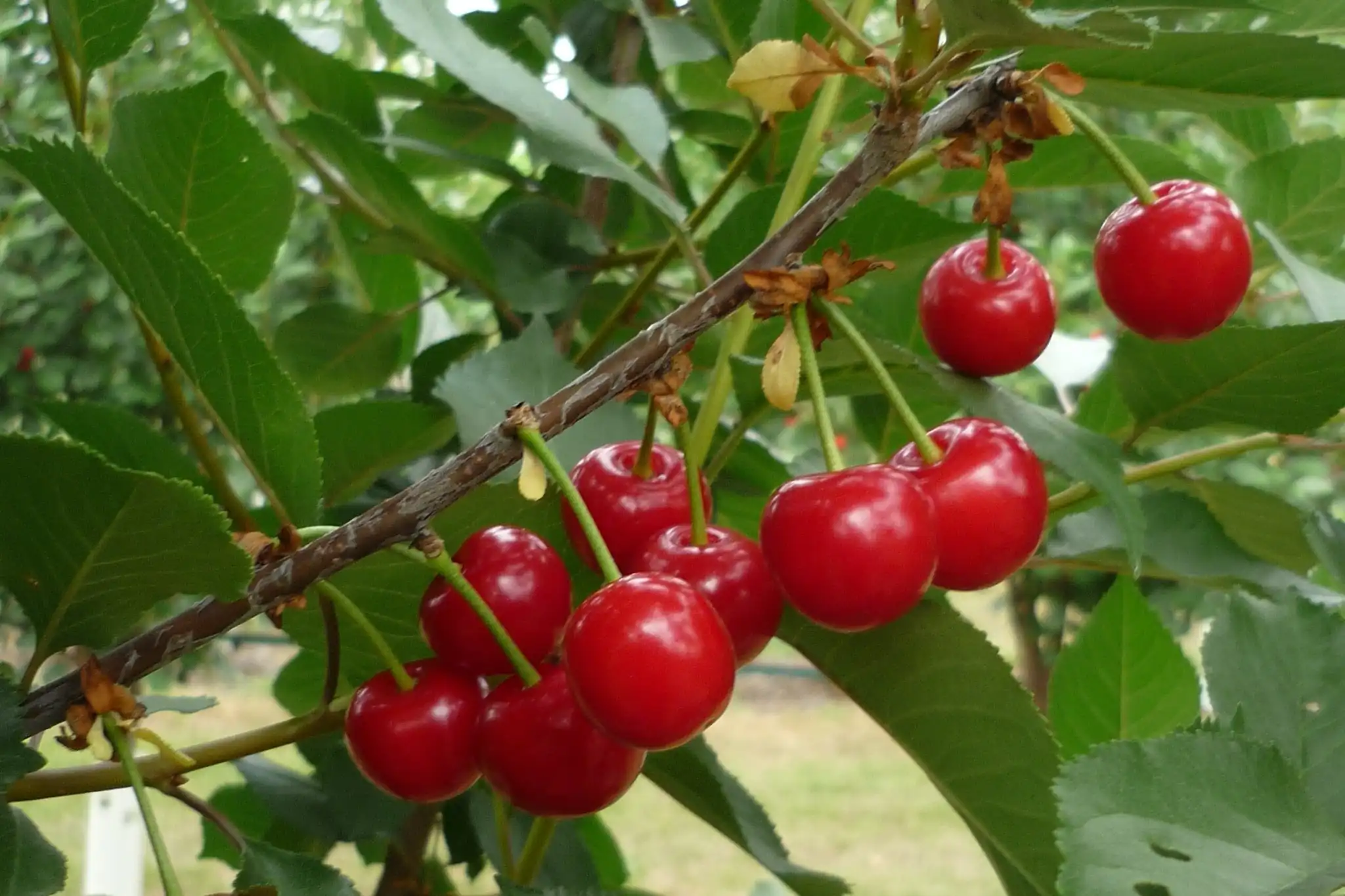“Protecting the plants is very important. In recent years, we have had major cracking problems. This is why we decided to try the Protecta® net,” Michele and his father Giuseppe De Tomaso from the De Tomaso farm in Polignano a Mare (Bari) have no doubts about the need to cover the cherry orchards.
Two years ago, they embarked on this path, experimenting with Arrigoni Spa's Protecta® net with very tight mesh over 100 square meters. The plant, with Ferrovia, Sweet Aryana®, and Sweet Lorenz® varieties, is structured with a planting distance of 2.5 meters by 80 cm and 2.5 meters by 2.5 meters, trained in a spindle and UFO system.
After two years of testing, they decided to cover another hectare and a half. The farm has a total of 15 hectares, including cherry orchards and table grapes. The De Tomaso family already cultivates 4.5 hectares of cherries without covers, but the weather conditions are becoming more challenging every year.
“This year in our area,” testified Giuseppe De Tomaso, “it rained little, but the difference was noticeable. The plants under the Protecta® net were practically dry. Outside the cover, we had about 10% cracking, under the nets, cracking was absent. We saw that the plants responded well, both in terms of light and breathing. The plants are healthy and there are no disease problems, as can happen with a classic cover.”
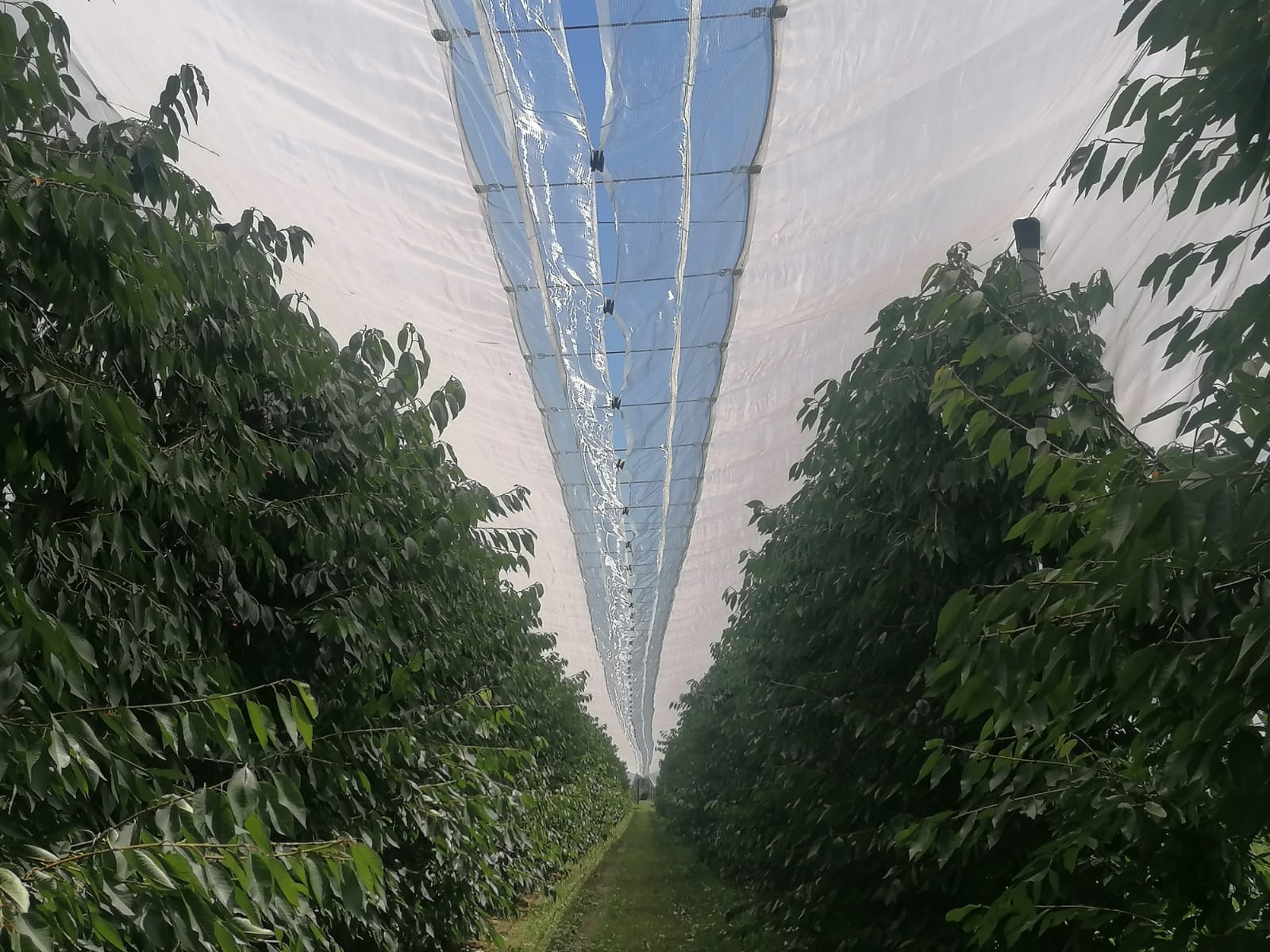 Image 1: Protecta® Ultra.
Image 1: Protecta® Ultra.
The characteristics of the Protecta® Ultra net
Protecta® Ultra, the latest version of the multifunctional net designed by Arrigoni, further improves the performance of the previous version. Arrigoni, a company founded in Como and a leader in Europe for the production of agrotextiles, works in more than 70 countries worldwide with agriculture as its core business.
“The design of Protecta® started about 8 years ago. We realized that fruit growers needed an alternative to the cover,” Giuseppe Netti, agronomist and head of Arrigoni Italy, told Cherry Times. The characteristic of Protecta®, thanks to its very tight mesh, is to protect crops from rain, wind, and excess sun damage, while still allowing air passage and maintaining a good microclimate.
The net is made of high-tenacity ARLENE® DIAMOND monofilament and special additives that allow water to slide off. Protecta® Ultra creates 24% shading, and tests conducted by Arrigoni's research and development department have shown an average 95% reduction in rainfall under the cover.
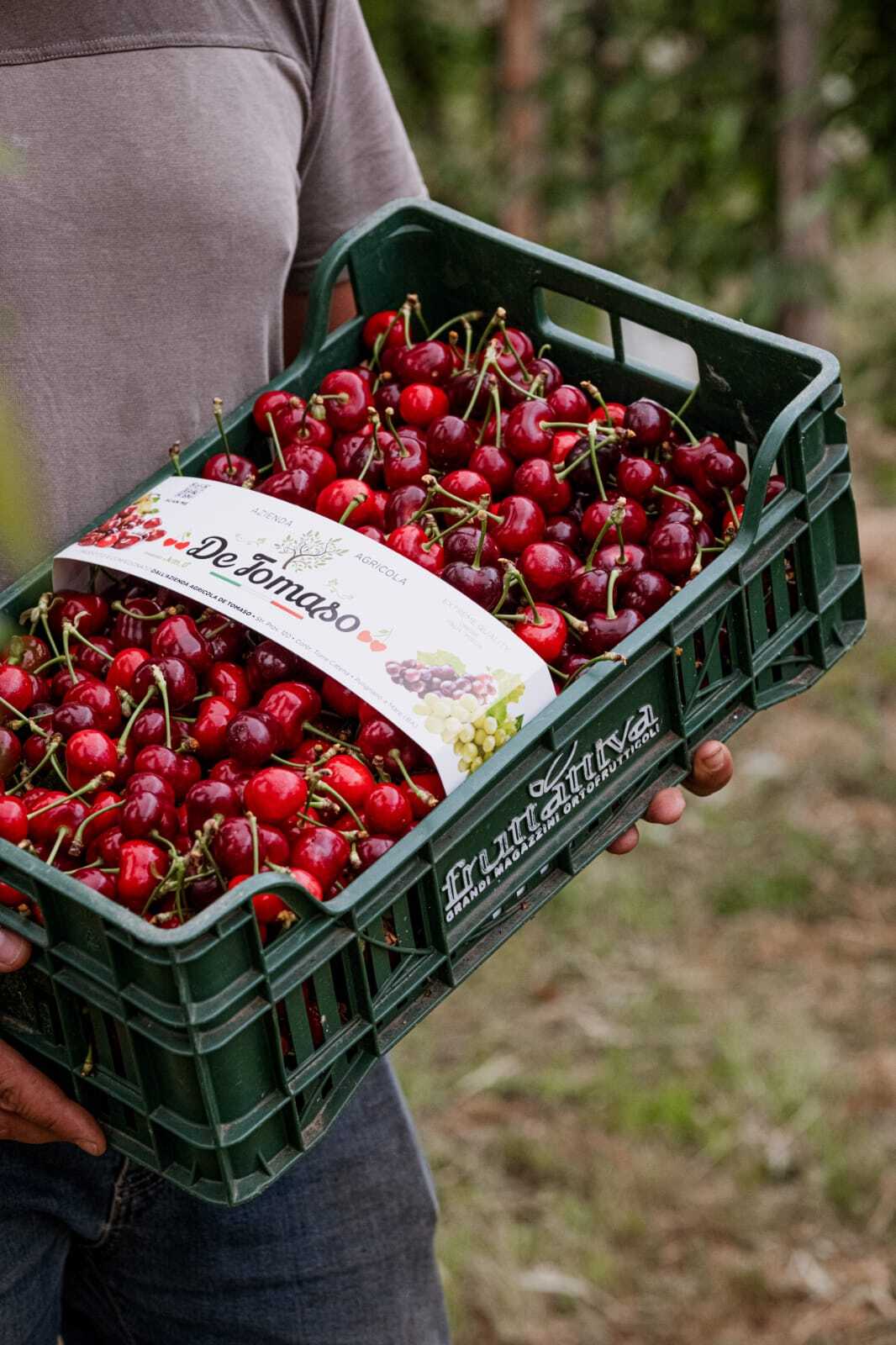 Image 2: Cherries from the De Tomaso farm.
Image 2: Cherries from the De Tomaso farm.
Arrigoni collaborates with universities and research centers
“When we design a new product,” Netti told us, “we rely on the collaboration of universities and research centers. In particular, for designing Protecta®, we conducted tests in our laboratories, and the experimentation continues, in a process of continuous improvement.
We used a machine, the Rain permeability tester, capable of simulating rain at various intensities. We tested Protecta® with torrential rains (60 mm per hour) and at different angles of the net.” The first Protecta® nets installed in the cherry orchards have not yet reached the end of their life, but Arrigoni predicts that their duration could reach 12-15 years before they need to be replaced.
“The advantage is its impermeability that still allows air passage, preventing the development of fungal diseases. It resists wind, tears, and protects from the sun.”
Protecta® is made with a 100% HDPE monofilament, high-density polyethylene, thus recyclable at the end of its life and potentially usable in production processes following circular economy principles. When properly closed, the net can also be used as an insect barrier, particularly to contain Drosophila suzukii.
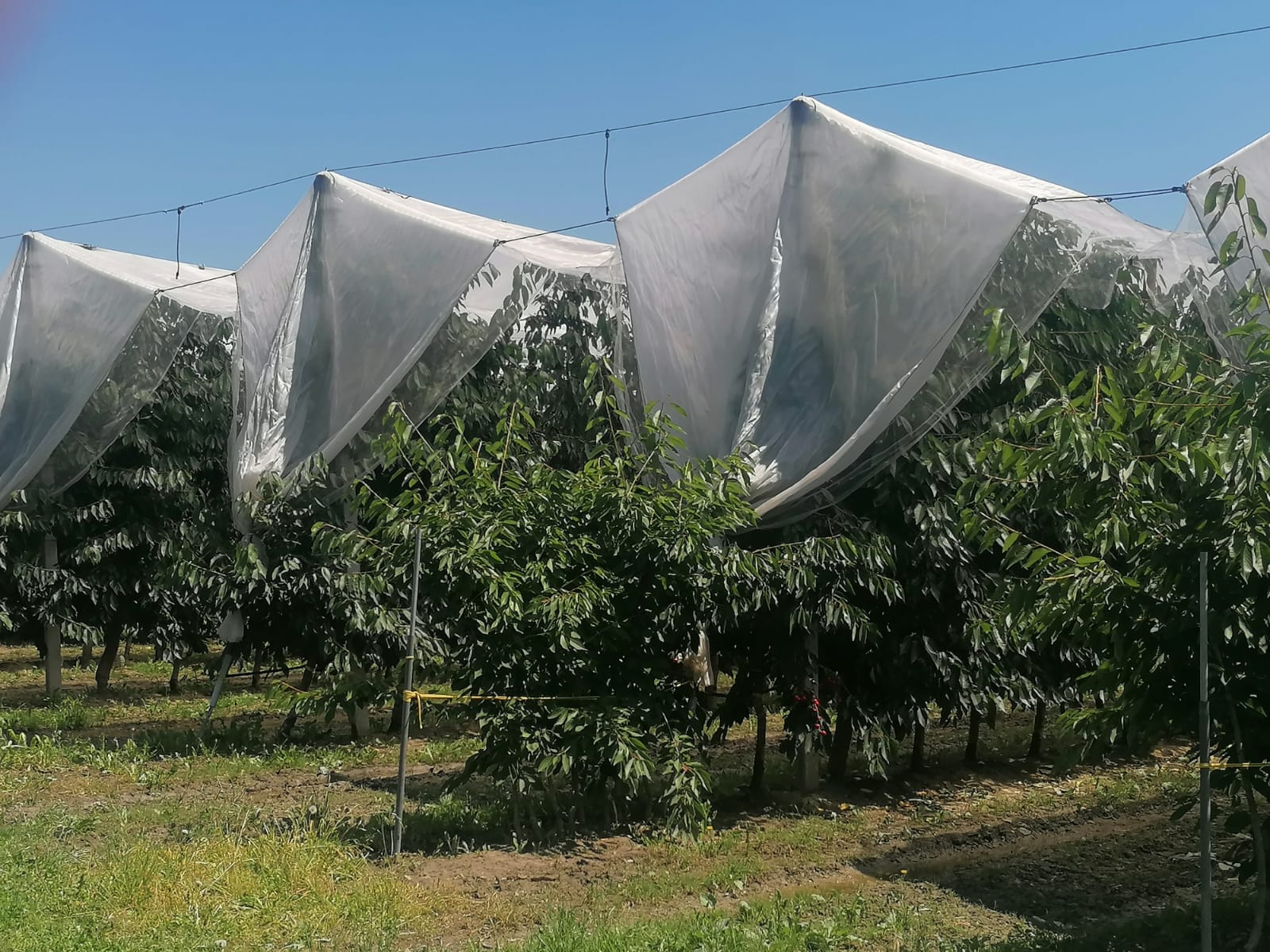 Image 3: Protecta® Ultra.
Image 3: Protecta® Ultra.
Arrigoni's advice to increase Protecta®'s performance
To fully exploit the advantages of Protecta®, it is essential to follow Arrigoni's advice: “You need to maintain tighter planting distances,” Giuseppe Netti told us, “narrowing the spacing compared to traditional anti-hail covers and avoiding distances greater than 6 meters between poles.
The structure, especially when very high, should be secured longitudinally and transversely. The transverse rope prevents oscillation. The internal poles should then be anchored to prevent the wind from lifting them from below. If possible, the roof should be made slightly elastic through fastening with an elastic cord. It is essential to avoid excessive stress on the structures. We also recommend using suitable fixing plates that do not tear the fabric.”
The need to cover the plants becomes more evident every year, but for farmers, it represents a significant investment: “While for other crops passive protection can be relied upon, cherry trees are considered very risky by insurance companies,” Giuseppe De Tomaso told Cherry Times, “and therefore there is not much offer.
Active protection with nets is the only weapon we have in our hands, but it involves making significant investments. In this sense, public funding, such as regional grants, would certainly be helpful.”
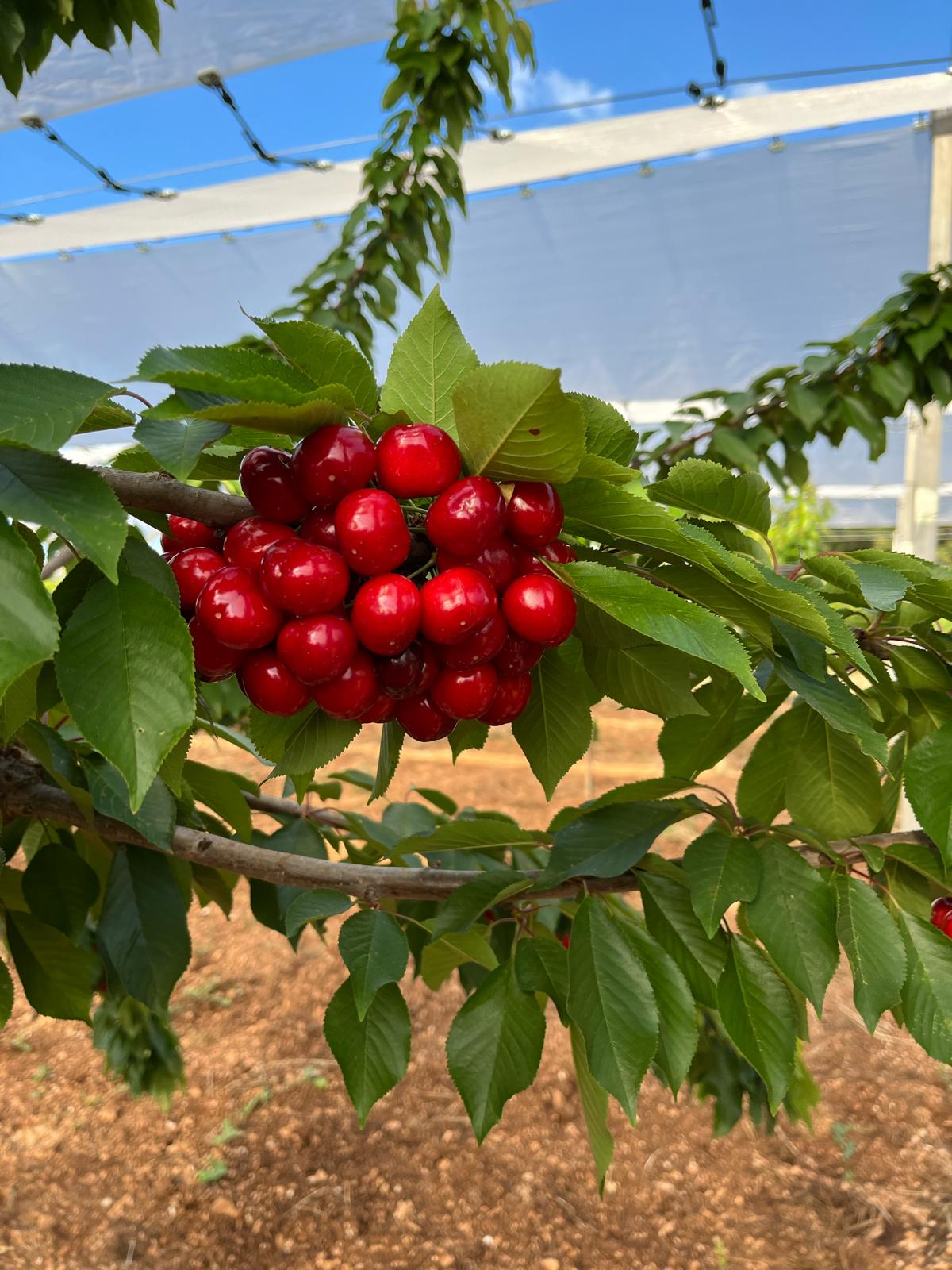
Barbara Righini
Images: Arrigoni
Cherry Times - All rights reserved









